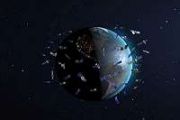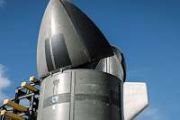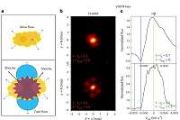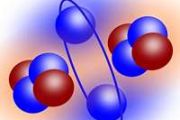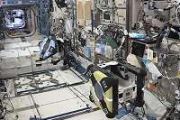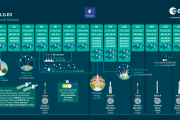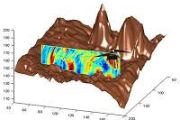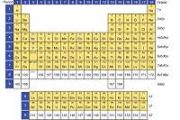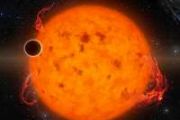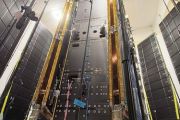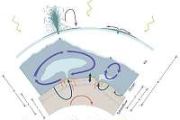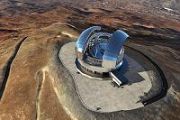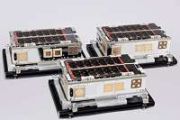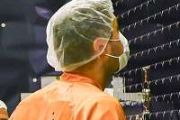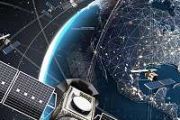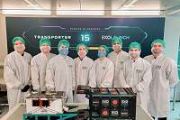
Copernical Team
In Australia, Raymond highlights importance of space, need for allies
 Emphasizing familiar and proven themes to an international audience, Chief of Space Operations, Gen. John W. "Jay" Raymond said during a March 23 speech in Australia that effective and unfettered operation in space is the cornerstone of a nation's security, its economic vitality and global stability.
"Space has become necessary to our modern way of life... From navigation to precision timi
Emphasizing familiar and proven themes to an international audience, Chief of Space Operations, Gen. John W. "Jay" Raymond said during a March 23 speech in Australia that effective and unfettered operation in space is the cornerstone of a nation's security, its economic vitality and global stability.
"Space has become necessary to our modern way of life... From navigation to precision timi Identifying RF and GPS interferences for military applications with satellite data
 Spire Global (NYSE: SPIR)has announced the expansion of their existing partnership with Slingshot Aerospace. On September 30, 2021, the U.S. Space Force awarded Slingshot Aerospace a $2 million contract to develop a prototype analytics tool that utilizes space-based location data from proliferated low Earth orbit (pLEO) constellations to identify potential sources of electronic ground interferen
Spire Global (NYSE: SPIR)has announced the expansion of their existing partnership with Slingshot Aerospace. On September 30, 2021, the U.S. Space Force awarded Slingshot Aerospace a $2 million contract to develop a prototype analytics tool that utilizes space-based location data from proliferated low Earth orbit (pLEO) constellations to identify potential sources of electronic ground interferen Webb continues multi-instrument alignment
 While telescope alignment continues, Webb's Mid-Infrared Instrument (MIRI) is still in cooldown mode. MIRI, which will be the coldest of Webb's four instruments, is the only instrument that will be actively cooled by a cryogenic refrigerator, or cryocooler. This cryocooler uses helium gas to carry heat from MIRI's optics and detectors out to the warm side of the sunshield. To manage the cooldown
While telescope alignment continues, Webb's Mid-Infrared Instrument (MIRI) is still in cooldown mode. MIRI, which will be the coldest of Webb's four instruments, is the only instrument that will be actively cooled by a cryogenic refrigerator, or cryocooler. This cryocooler uses helium gas to carry heat from MIRI's optics and detectors out to the warm side of the sunshield. To manage the cooldown New experiment could confirm the fifth element
 An experiment which could confirm the fifth state of matter in the universe - and change physics as we know it - has been published in a new paper from the University of Portsmouth.
Physicist Dr Melvin Vopson has already published research suggesting that information has mass and that all elementary particles, the smallest known building blocks of the universe, store information about them
An experiment which could confirm the fifth state of matter in the universe - and change physics as we know it - has been published in a new paper from the University of Portsmouth.
Physicist Dr Melvin Vopson has already published research suggesting that information has mass and that all elementary particles, the smallest known building blocks of the universe, store information about them AFRL AFOSR conduct successful hypersonics rocket launch at Wallops
 The BOLT II "In memory of Mike Holden" flight experiment, managed by the Air Force Research Laboratory/Air Force Office of Scientific Research (AFRL/AFOSR), launched on the evening of March 21 from the National Aeronautics and Space Administration's (NASA) Wallops Flight Facility in Virginia. Dr. Michael Holden, who, up until his passing in 2019, had been a leader in the hypersonics field since
The BOLT II "In memory of Mike Holden" flight experiment, managed by the Air Force Research Laboratory/Air Force Office of Scientific Research (AFRL/AFOSR), launched on the evening of March 21 from the National Aeronautics and Space Administration's (NASA) Wallops Flight Facility in Virginia. Dr. Michael Holden, who, up until his passing in 2019, had been a leader in the hypersonics field since China's Tianzhou-2 cargo craft leaves space station core module
 China's cargo spacecraft Tianzhou-2 separated from the core module of the country's space station Sunday afternoon, announced the China Manned Space Agency.
At 3:59 pm Beijing Time, Tianzhou-2 left the core module of the Tiangong space station after completing all of its scheduled tasks, said the agency.
During its operation in orbit, Tianzhou-2 carried out a series of extended appli
China's cargo spacecraft Tianzhou-2 separated from the core module of the country's space station Sunday afternoon, announced the China Manned Space Agency.
At 3:59 pm Beijing Time, Tianzhou-2 left the core module of the Tiangong space station after completing all of its scheduled tasks, said the agency.
During its operation in orbit, Tianzhou-2 carried out a series of extended appli Eutelsat and OneWeb sign agreement to address key connectivity verticals
 Eutelsat Communications and OneWeb, the low Earth orbit (LEO) satellite communications company, has announced a global, multi-year Distribution Partnership Agreement (DPA) for OneWeb capacity. The agreement paves the way for Eutelsat to commercialise OneWeb services across key verticals including Maritime, Aviation, Enterprise, Telcos and Government.
The partnership reflects the deepening
Eutelsat Communications and OneWeb, the low Earth orbit (LEO) satellite communications company, has announced a global, multi-year Distribution Partnership Agreement (DPA) for OneWeb capacity. The agreement paves the way for Eutelsat to commercialise OneWeb services across key verticals including Maritime, Aviation, Enterprise, Telcos and Government.
The partnership reflects the deepening Fleet Space Technologies to revolutionise mineral exploration with launch of Geosphere
 GeoSphere is a first-of-its-kind system that combines wireless Geodes, edge computing and a constellation of low earth orbit (LEO) nanosatellites to discover critical resources up to 100 times faster than traditional methods.
It also drastically reduces the requirement for environmentally damaging elements of existing surveyance practices such as the use of explosives, noise machines and d
GeoSphere is a first-of-its-kind system that combines wireless Geodes, edge computing and a constellation of low earth orbit (LEO) nanosatellites to discover critical resources up to 100 times faster than traditional methods.
It also drastically reduces the requirement for environmentally damaging elements of existing surveyance practices such as the use of explosives, noise machines and d GS Yuasa Lithium Power completes PDR of scalable spacecraft battery
 GS Yuasa Lithium Power (GYLP) has announced the successful completion of the Preliminary Design Review (PDR) for a new scalable small form factor battery design. With PDR complete the battery design will now move into the critical design phase.
GYLP's design integrates the recently qualified LSE12x Lithium-ion Cell developed by GS Yuasa Technology LTD (GYT) and seeks to align with smaller
GS Yuasa Lithium Power (GYLP) has announced the successful completion of the Preliminary Design Review (PDR) for a new scalable small form factor battery design. With PDR complete the battery design will now move into the critical design phase.
GYLP's design integrates the recently qualified LSE12x Lithium-ion Cell developed by GS Yuasa Technology LTD (GYT) and seeks to align with smaller Advanced Air Mobility looks ahead to automation
 Using software to handle tasks to assist people is not a new concept - look at our computers, cell phones or electric cars.
Advanced Air Mobility, or AAM, aircraft intend to apply that same idea with new software algorithms and hardware such as sensors and radars. Technology like this could enable vehicles to operate without a pilot, or if a pilot is in the loop, increase the safety. Use c
Using software to handle tasks to assist people is not a new concept - look at our computers, cell phones or electric cars.
Advanced Air Mobility, or AAM, aircraft intend to apply that same idea with new software algorithms and hardware such as sensors and radars. Technology like this could enable vehicles to operate without a pilot, or if a pilot is in the loop, increase the safety. Use c 

